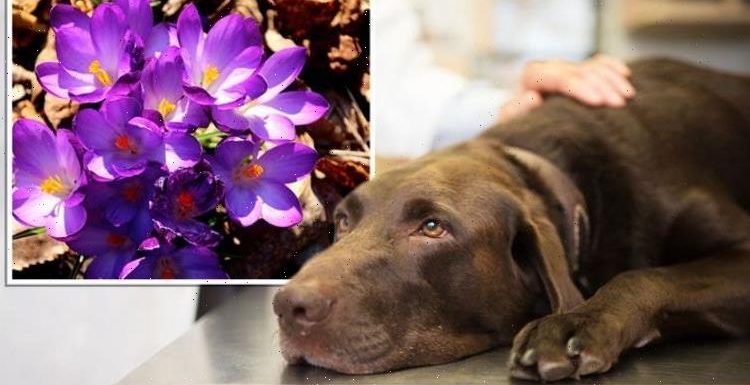
Dog eats entire slice of cheese after owner offers ‘one bite’
We use your sign-up to provide content in ways you’ve consented to and to improve our understanding of you. This may include adverts from us and 3rd parties based on our understanding. You can unsubscribe at any time. More info
The autumn season is in full swing and that means gardens up and down the country are sprouting exciting new foliage. From hydrangeas to chrysanthemums, gardens are adapting to the colder, wetter and windier conditions that precede the winter chill. However, pet owners have been warned many of the plants seen around this time of the year are toxic and potentially lethal to our pets.
Interior design website Homedit.com consulted gardening expert Calum Maddock from Home Now to compile a list of plants and seeds you should avoid this season.
1. Acorns and conkers – A favourite among children, acorns and conkers can be “extremely toxic” when eaten in large amounts by dogs.
Conkers contain a poison called aesculin, which is toxic to dogs.
Symptoms usually show up between one and six hours after ingestion and include lethargy, loss of appetite and vomiting.
Pay close attention to unripe or green acorns as these are the most dangerous.


2. Hydrangeas – Parts of the colourful flowers are toxic to both cats and dogs as they contain cyanide.
When ingested, they can lead to painful stomach problems, vomiting and intestinal blockages.
Hydrangea poisoning is rare but you should still keep an eye on your pets having a nibble – the bulbs in particular.
3. Yew Trees – The needles and seeds of a yew tree are extremely poisonous to most animals.
Eating the leaves alone can cause severe symptoms and, in the most severe cases, death.
Even small amounts can cause nausea, vomiting, and diarrhoea.
If you have a pet that runs around the garden feely, “it’s best to avoid planting this”.


4. Horse Chestnut Trees – From September onwards, pay close attention to your pets when around Horse Chestnut trees.
The tree’s bark, leaves and flowers can be fatal when consumed.
Symptoms typically include gastrointestinal distress, disorientation, spasms and even death.
Also known as Aesculus hippocastanum, the tree contains a neurotoxic glycoside aesculin.

5. Autumn Crocuses – Although pretty to look at, the flowers can be toxic when eaten.
Crocuses cause general gastrointestinal upset including, drooling, vomiting and diarrhoea.
The flower also blossoms in the spring, so pay close attention later next year.
On top of the five plants to look out for, Mr Maddock recommends also avoiding Amaryllis, Chrysanthemum, Oleander and Ragwort.
All parts of these plants are toxic, though to varying degrees.
Homedit.com added: “If you happen to have any of these plants in your garden, you may want to take precautionary measures.
“Careful training, plant barriers or, if it comes to it, the removal of the plant or tree in question are all options to explore.
“It’s good practice (although often difficult) to avoid your pet coming into contact with these plants when out on walks or trips.”
If you suspect your pooch or moggie has been poisoned by any of these plants, or some other toxin, you can call your vet or the Animal PoisonLine at 01202 509000.
The helpline is operated by the People’s Dispensary for Sick Animals (PDSA).
Source: Read Full Article